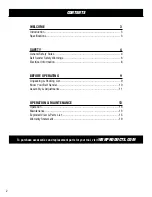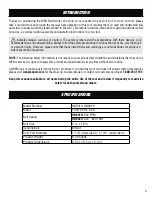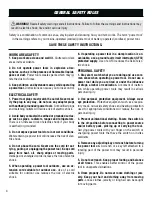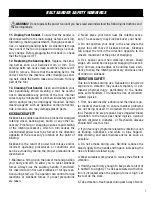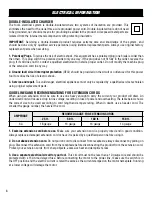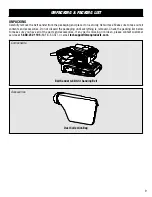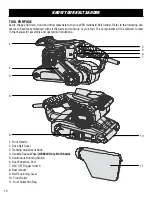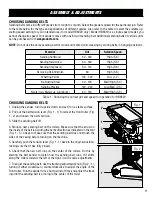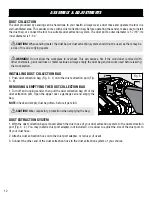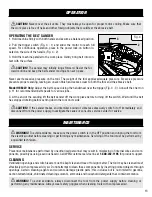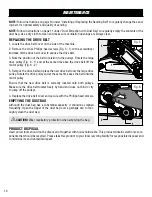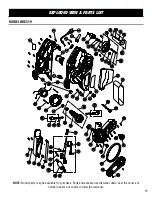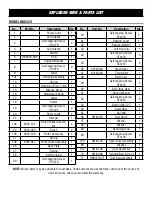
CAUTION!
When sanding metal, the dust bag or dust extraction system should not be used, as there may be
a risk of fire due to flying sparks.
ASSEMBLY & ADJUSTMENTS
DUST COLLECTION
The dust produced by sanding can be hazardous to your health. Always wear a dust mask and operate the tool in a
well-ventilated area. This sander comes with a dust collection bag. Before operating the sander, make sure to install
the dust bag, or connect the tool to a suitable dust extraction system. The dust port’s outer diameter is 1-7/16”; its
inner diameter is 1-1/4”.
WARNING!
Do not allow the workpiece to overheat. This can cause a fire if the wood dust is mixed with
other chemicals, paint residues or metal residues. Always empty the dust bag and vacuum used before leaving
the work station.
INSTALLING DUST COLLECTION BAG
1. Push dust collection bag (Fig. 3 - 1) onto the dust extraction port (Fig.
3 - 2).
REMOVING & EMPTYING THE DUST COLLECTION BAG
1. Turn off and unplug sander, then pull the dust collection bag off of the
dust extraction port. Open the zipper over a garbage can and empty the
bag.
NOTE:
Check and empty dust bag often, before it gets full.
Fig. 3
12
1
2
DUST EXTRACTION SYSTEM
1. With the dust collection bag removed, attach the dust hose of your dust extraction system to the dust extraction
port (Fig. 3 - 2). You may install a dust port adapter (not included), or reducer to adjust the size of the dust port to
fit your dust hose.
2. Attach a dust extraction hose onto the dust port adapter, or reducer (if used).
3. Connect the other end of the dust extraction hose to the dust extraction system of your choice.
CAUTION!
Wear respiratory protection when emptying the bag.


